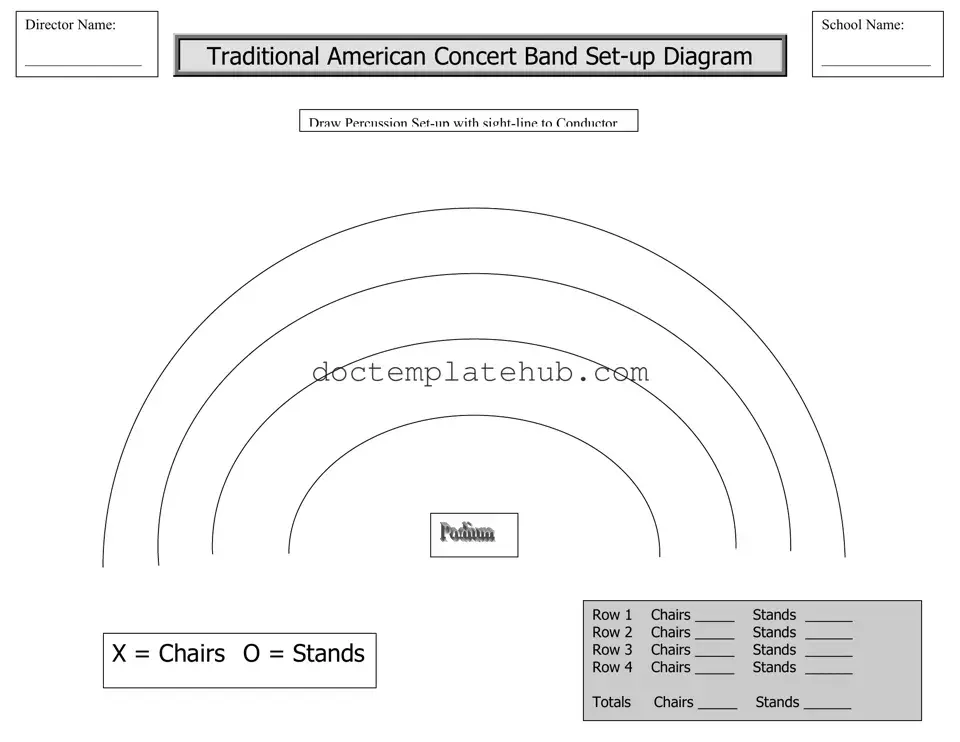What is the purpose of the Band Seating Chart form?
The Band Seating Chart form is designed to help organize the seating arrangement for a concert band performance. It allows directors to specify how many chairs and music stands are needed for each row, ensuring that all musicians have adequate space and visibility during the performance.
How should I fill out the form?
To complete the form, start by entering the director's name and the school name at the top. Next, draw the percussion setup with a clear sight-line to the conductor. Then, fill in the number of chairs and stands for each row. Make sure to total the number of chairs and stands at the end of the form.
What if I have specific seating requests for my band?
You can include any specific seating requests in the notes section of the form. However, keep in mind that percussion instruments must remain in the basic setup as outlined in the form. The stage crew will do their best to accommodate your needs.
When is the deadline for submitting the form?
The completed Band Seating Chart form must be faxed to 780-438-1465, attention Rob Speers, prior to March 1, 2008. Ensure that you submit the form on time to avoid any issues with your performance setup.
What should I do if I need to make changes after submitting the form?
If you need to make changes after submitting the form, contact the stage crew as soon as possible. They will assist you with any adjustments that can be made before the performance date.
Is there a specific setup for percussion instruments?
Yes, the percussion setup is fixed and must adhere to the basic arrangement provided in the form. This ensures that all percussionists have the necessary equipment and visibility during the performance.
Can I see an example of a completed seating chart?
Yes, the form includes an example from the 2007 Huron Concert Band, which outlines how many chairs and stands were allocated for each row. This example can serve as a helpful reference when filling out your own form.
Who should I contact if I have questions about the form?
If you have any questions regarding the Band Seating Chart form, reach out to Rob Speers or the stage crew. They will provide the necessary guidance and support to ensure your seating arrangement is properly set up.
